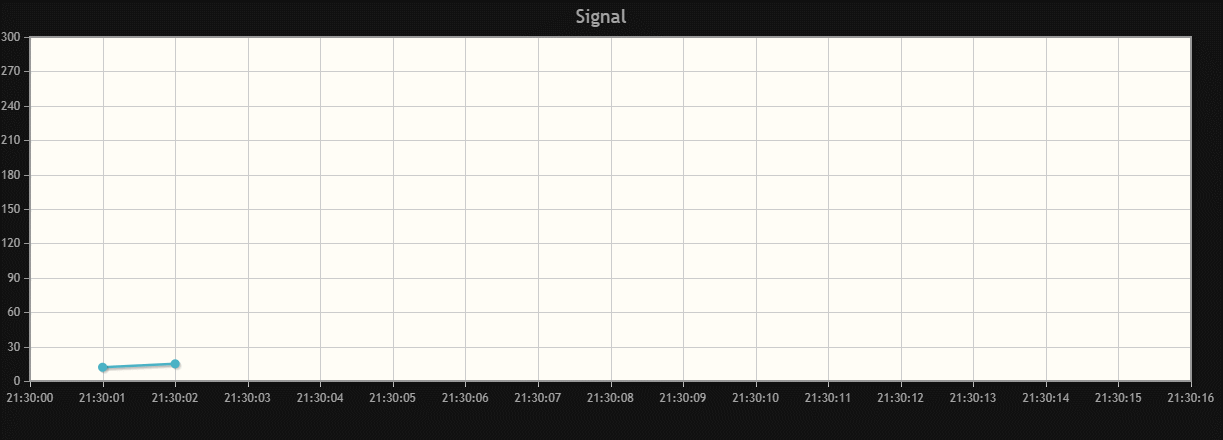jqPlot는 차트를 그려주는 jQuery 플러그인입니다.
jqPlot 튜토리얼을 진행해보도록 하겠습니다.
1. jqPlot download (http://www.jqplot.com/)
튜토리얼에는 가장 최신 버전인 jquery.jqplot.1.0.9.d96a669을 사용하였습니다.


2. js, css 파일 확인
차트 그리기에 필요한 jquery.jqplot.js, jquery.jqplot.css 파일이 있고,
plugins에 다양한 기능을 제공하는 js 파일들이 들어있습니다.


본인의 웹 프로젝트에서 원하는 경로에 넣어주면 됩니다.

3. View 코드 작성
본 튜토리얼에서는 Springboot 기반 Mustache 템플릿 엔진을 사용하였습니다.
코드는 아래와 같습니다.
<!DOCTYPE html>
<html>
<head>
<script type="text/javascript" src="resources/js/jquery.js"></script>
<script type="text/javascript" src="resources/js/jquery.jqplot.js"></script>
<script type="text/javascript" src="resources/js/jqplot.dateAxisRenderer.js"></script>
<script type="text/javascript" src="resources/js/jqplot.highlighter.js"></script>
<script type="text/javascript" src="resources/js/jqplot.cursor.js"></script>
<script src="resources/js/main.js?v=<%=System.currentTimeMillis()%>"></script>
<link rel="stylesheet" type="text/css" href="resources/css/jquery.jqplot.css" />
</head>
<body>
<div id="lineChart" style="height:400px;width:1200px; "></div>
</body>
</html>jqplot 플러그인을 먼저id="lineChart"는 jqPlot로 그린 차트를 보여주기 위한 Element입니다.
4. js 코드 작성 (main.js)
var plot;
var chartData = [['21:30:01', 12]]; // [['21:30:01', 12], ['21:30:02', 15], ...]
$(document).ready(function() {
renderChart();
update();
});
function renderChart() {
plot = $.jqplot('lineChart', [chartData], {
title: 'Signal'
, axes: {
xaxis: {
renderer:$.jqplot.DateAxisRenderer
, tickOptions: {
formatString: '%H:%M:%S'
}
, min: '21:30:00'
, max: '21:30:16'
, numberTicks: 17
},
yaxis: {
min: 0
, max: 300
, numberTicks: 11
}
}
, cursor: {
show: true,
zoom: true
}
});
}$.jqplot()의 첫 번째 매개변수는 id 값이며, 두 번째 매개변수는 차트에 보여줄 데이터(X, Y)입니다.
x축(xaxis)은 renderer:$.jqplot.DateAxisRenderer로 설정하여 Date로 표현합니다.
Date로 표현하고 싶지 않을때는 생략하면 됩니다.
tickOptions의 formatString은 날짜 형식을 의미합니다. 데이터가 "21:30:01"이기 때문에, 형식은 "%H:%M:%S"입니다.
또한 tickOptions의 min, max는 최소 최대를, numberTicks는 몇 칸으로 표현할것인가를 의미합니다.
cursor의 show, zoom을 true로 설정해줌으로써, 차트를 줌인, 줌아웃(더블클릭) 할 수 있습니다.
var new_data = [15, 27, 35, 52, 85.9, 179, 193, 205, 230, 162, 130, 115, 95, 107];
var idx = 0
function update() {
if (idx >= new_data.length) {
return;
}
getChartData();
setTimeout(update, 1000); // 1초 단위
}
function getChartData() {
date_str = (chartData[chartData.length - 1])[0];
date = date_str.split(':');
hour = Number(date[0]);
min = Number(date[1]);
sec = Number(date[2]);
next_sec = String(sec + 1);
new_date = (hour + ':' + min + ':' + next_sec.padStart(2, '0'))
chartData.push([new_date, next[idx]]);
idx += 1;
reload();
}update()는 new_data를 1초 단위로 차트에 추가로 표현합니다.
getChartData()는 chartData의 마지막 date를 기준으로 1초씩 증가하며 new_data를 추가합니다.
padStart(2, '0')은 sec 데이터를 두 자리로 표현하기 위해서 사용한다. 한 자리 데이터를 넣어주면 차트가 그려지지 않는다.
function reload() {
plot = $.jqplot('lineChart', [chartData], {
title: 'Signal'
, axes: {
xaxis: {
renderer:$.jqplot.DateAxisRenderer
, tickOptions: {
formatString: '%H:%M:%S'
}
, min: '21:30:00'
, max: '21:30:16'
, numberTicks: 17
},
yaxis: {
min: 0
, max: 300
, numberTicks: 11
}
}
, cursor: {
show: true,
zoom: true
}
}).replot();
}
reload()는 renderChart()의 동작과 같습니다. 차이점은 차트를 다시 그리기 때문에 plot.replot()을 사용합니다.

'Web & Mobile > JavaScript' 카테고리의 다른 글
| [JavaScript] Chrat.js 라인 차트 예제 (0) | 2022.01.25 |
|---|---|
| [JavaScript] 문자열 길이 구하기 (0) | 2020.09.24 |
| [JavaScript] setTimeout(), setInterval() 차이 (0) | 2020.08.11 |